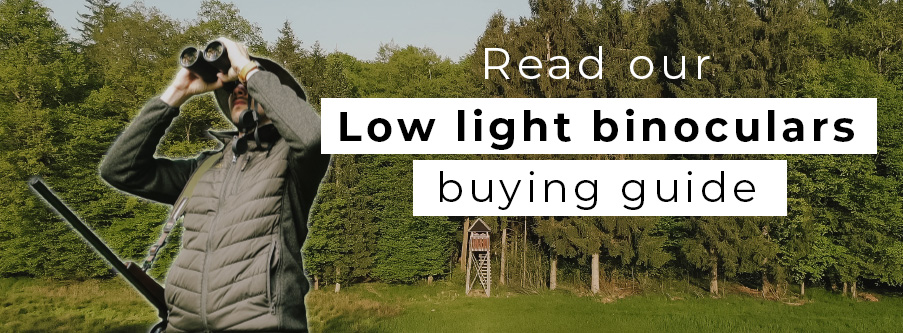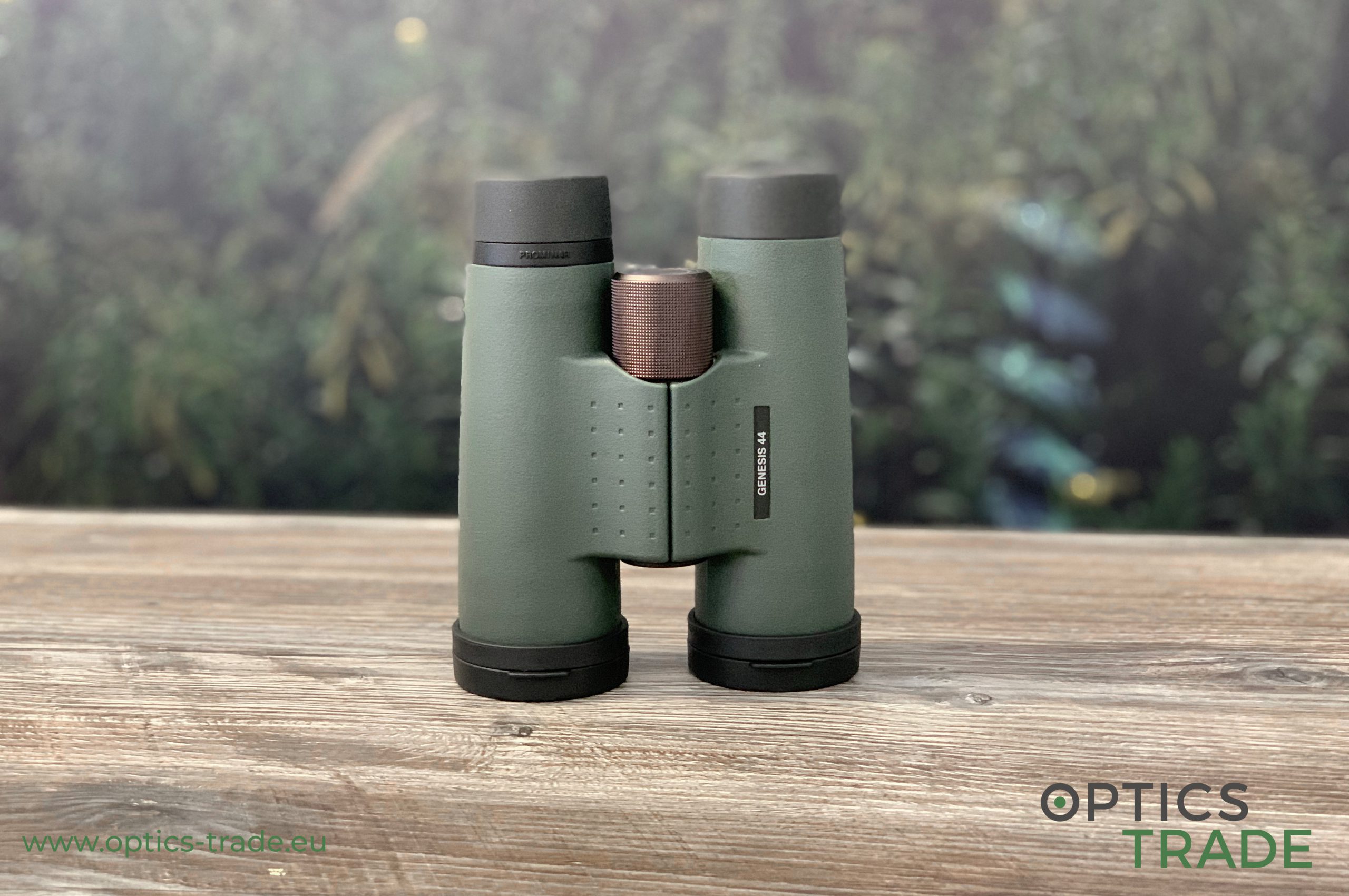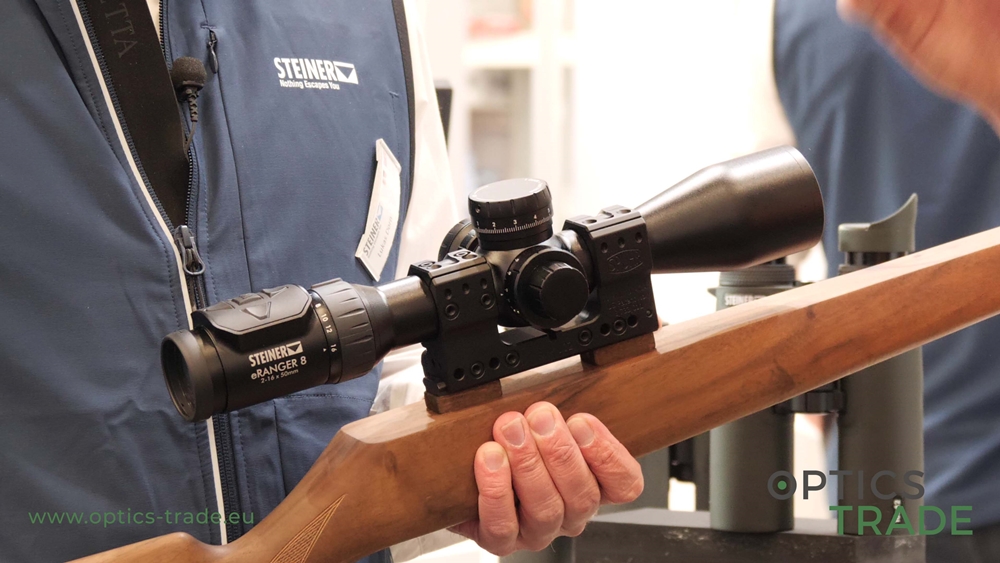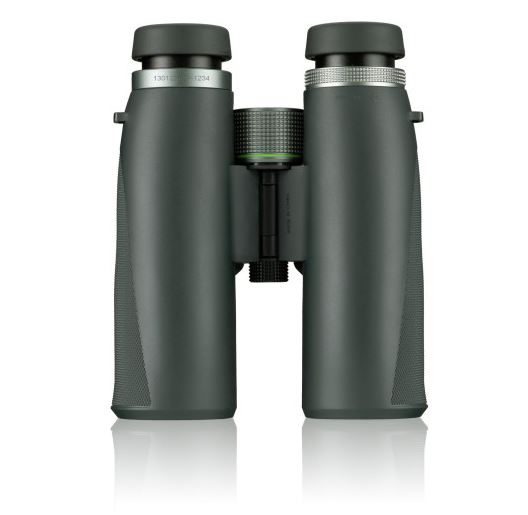With so many 8×42 binoculars available and competition so harsh, it is difficult to determine which to buy. If you are facing a dilemma of this kind, you have come to the right page. The purpose of this guide is to help those who are considering a purchase of 8×42 binoculars. In the beginning, we explained the general features and listed the most common field of use. Then, we divided the 8×42 binoculars by price, pointing out the characteristics of the binoculars found in each price range. We listed the best buys in each price class for 2022, presenting their strong and weak points.
If you have any additional questions regarding 8×42 binoculars or any optical device from the field of sport optics, send an e-mail on [email protected].
As a team of passionate sports optics enthusiasts, we are always glad to help.
1. General features of 8×42 binoculars
8×42 is the most popular configuration in the world of binoculars. Why is that? Well, they are not referred to as all-round binoculars by coincidence. They combine big fields of view with a decent exit pupil for observation in the dusk. On top of that, the shaking of the hands during observing is not as noticeable as with binoculars with bigger magnification. The 8×42 configuration, often regarded as the ‘standard’ configuration, is used by both novice and experienced users because of its practicality. Since this configuration is so popular, it can be found in the offer of every manufacturer of binoculars. If a company starts producing binoculars, they usually begin with an 8×42 model.
One of the main features of 8×42 binoculars is a wide field of view. Currently, the 8x and 10x magnification binoculars are the most widespread – the lower the magnification, the wider the field of view. The best 8×42 binoculars offer an outstanding field of view of 150 m on 1000 m, the 120–140 m on 1000 m is the average section, while anything below 120 m on 1000 m is considered poor.
Check out our video explaining the differences between 8×42 and 10×42 binoculars
Not as capable for dusk observation as models with the objective lens diameter of 56 mm, the 8x42s still perform well in twilight because of the substantial exit pupil. The exit pupil is the diameter of the beam of light that travels from the eyepiece to the user’s eye. It is calculated by dividing the diameter of the objective lens with the magnification. In the case of 8×42 (42 ÷ 8 = 5.25) the exit pupil is 5.25 mm. The pupil of the human’s eye can dilate up to 7 mm in optimal conditions, but that value decreases as we age. In practice, that means that an older person cannot benefit from the 7-mm exit pupil provided by 8×56 binoculars. If your eye doesn’t dilate beyond 5.25 mm in diameter, the 8×42 will be just as bright for you as the 8×56 binoculars. In any case, the 8×42 binoculars are significantly better in dusk than the 10×42 binoculars because of the bigger exit pupil.
Looking for low light binoculars?
The bigger the magnification, the more noticeable the shaking of hands during the use of binoculars. With 8×42, you won’t have as much trouble maintaining a steady image as with 10×42. For this reason, the 8x magnification binoculars are rarely mounted on tripods, whereas tripod mounting is common practice with the 10x magnification and above.
Almost all 8×42 binoculars feature Schmidt-Pechan prisms which are a subcategory of roof prisms. Only a few models, Blaser Primus 8×42 for example, feature Abbe-Koenig roof prisms which are generally limited to the models with a lens diameter of 54 mm and greater. Porro prism binoculars are a rarity in this class as well.
All the 8×42 binoculars, at least the ones with a price tag of over 100 €, are filled with Nitrogen or Argon to prevent internal fogging at low temperatures. They are also waterproof.
The binoculars of this type were the first ones to be comfortably used by glasses wearers. Before the 8×42 binoculars were introduced, the market was dominated by Porro prism binoculars on which glasses users have problems finding the right eye relief because of the single-position eyecups.
2. Fields of use of 8×42 binoculars
The 8×42 configuration can be used for all kinds of observations.
Hunters love this configuration for its practicality. The 8x magnification provides a wide field of view – these are great for observing from a raised hide, stalking, and all similar hunting situations. 10×42 is generally a better choice for mountain hunting or any scenario where distances to the observed object are greater than usual and not enough details can be discerned with an 8×42. For dusk hunting, 8×42 is superior to 10×42 because of the bigger exit pupil.
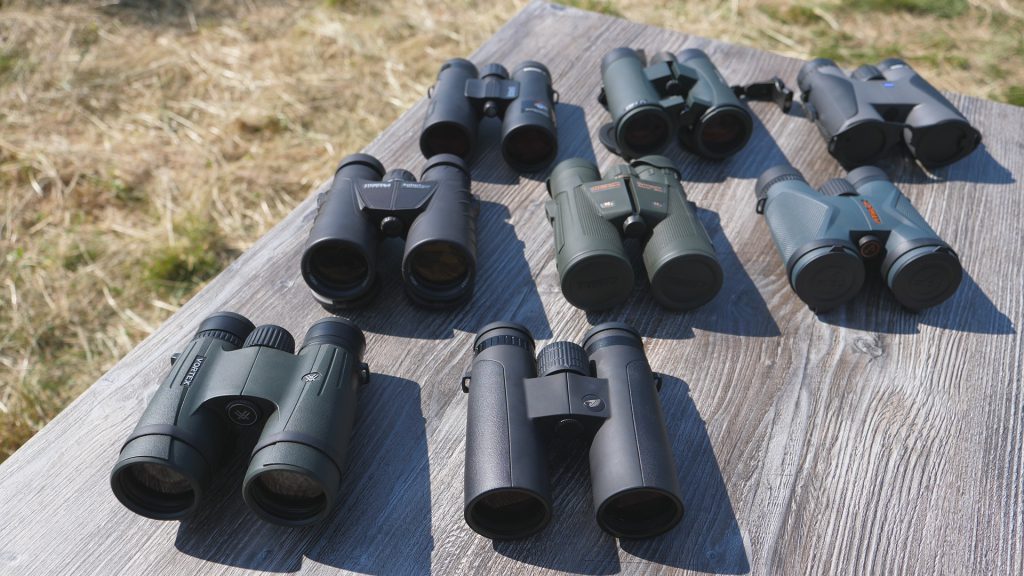
Birdwatchers are keen of the 10x magnification binoculars, but quite a few go for the 8x as well. The 8x magnification is useful especially if the observed bird isn’t that far away. You will also see some surroundings because of the wide field of view.
Even though hikers usually go for the pocket or the compact type of binocular, the 8×42 is also a great choice. These are more comfortable to use than smaller binoculars and not too heavy to be a burden on longer treks. Because of their all-round functionality, the 8×42 can be used for travelling as well. After all, they are much less bulky than the 56mm objective lens models and can be stored in the luggage without taking up too much space.
Looking for compact binoculars?
The 8×42 configuration can be used for all kinds of observations, which is why you can’t go wrong by purchasing it. All other configurations are designed for situations more specific.
3. Price classes
3.1 Under 100 €
You can find some 8×42 binoculars in this price class, but we wouldn’t recommend buying them if you wish to have a decent observing experience. The optical quality of binoculars in this price class is on a low level which might lead to eye fatigue even after a short while of use. If you are not willing to spend more than 100 € on a binocular, we recommend that you buy a compact (lens diameter of around 30 mm) or a pocket binocular (lens diameter around 20 mm). Their optical performance is far from astounding but better than on 42mm binoculars in this price class.
3.2 100–400 €
This is the amount of money that you should consider spending on a decent, entry-level 8×42 binocular. In terms of optics, these devices are suitable for novice birdwatchers, novice hunters, and nature enthusiasts. They are a great choice for someone who wants to get acquainted with the magnificent world of optics, and for someone who uses binoculars occasionally.
So, what are some of the characteristics of binoculars in this price class? Well, for starters, we have to point out that there is a huge difference in quality between 100 and 400 €. Still, there are some unifying characteristics that we can list here. These binoculars mostly feature a plastic body with a single-bridge design. Predominantly, there are two positions of the eyecups, with the dioptre ring located on the right eyepiece. All are made in China. The warranty periods are short, 2 years mostly.
We tested all the notable 8×42 binoculars currently in production and came up with a selection of best buys in this price range.
Nikon Prostaff 7s 8×42
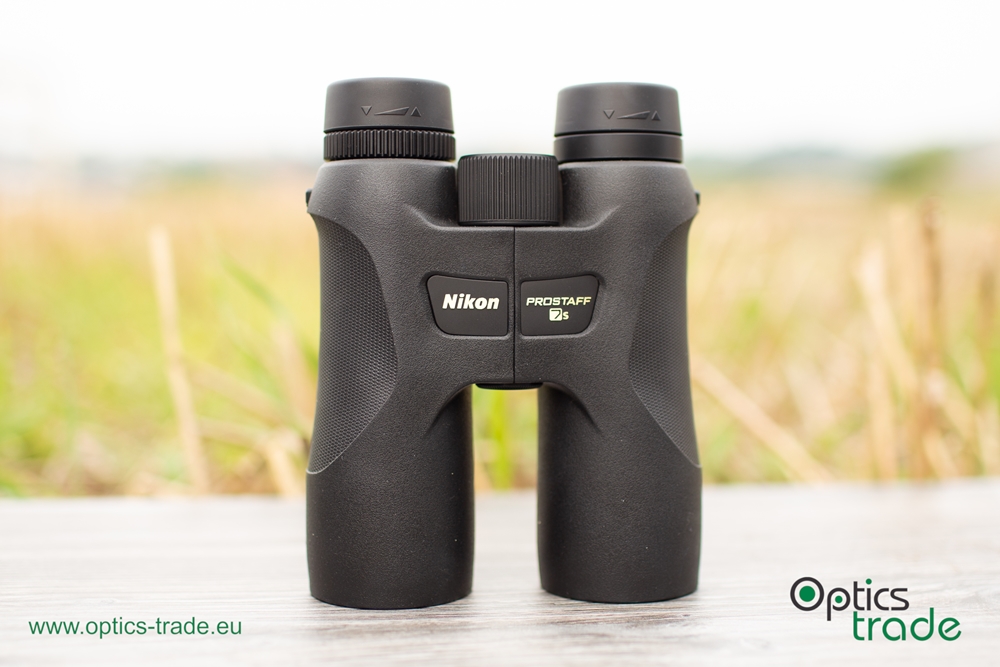
The Prostaff 7s isn’t the best looking binocular on the market, but the optical quality that it provides makes up for it. On top of that, it is made by Nikon which is a well-known brand with some history in optics behind it. The housing is made of plastic – in other words, it is nothing special, but the surface is rubberized to ensure a firm grip during use. We aren’t fans of the plasticky, cheap-looking objective lens covers provided in the box.
| PROS | CONS |
| Great optics for the money | Lots of plastic parts |
| Renowned manufacturer | Not the most appealing design |
| Low-quality objective lens covers |
More details on Nikon Prostaff 7s 8×42 in our video review below
Nikon Prostaff 7s 8×42
Available on our website. Worldwide shipping.![]()
One of our pick of the best affordable 8×42 binoculars
Delta Optical Forest II 8×42

We think that Delta Optical Forest II 8×42 is also a worthy mention – it is by far the most affordable device on this list but not far behind the ones listed above in terms of optical quality. With a price tag of 150 €, Forest II is indubitably the best buy under 200 €. It boasts an exceptional field of view, decent optics, and a great solution for installing objective lens covers. The build quality is not that great, but let’s not forget that we are talking about a binocular priced 150 €.
| PROS | CONS |
| Big field of view | Build quality |
| Great price/performance ratio | |
| A great solution for objective lens covers |
More details on Delta Forest II 8×42 in our video review below
Delta Forest II 8×42
Available on our website. Worldwide shipping.![]()
Among the best affordable 8×42 binoculars
3.3 400–800 €
Binoculars in this price class are suitable for those who plan on using them often but aren’t willing to spend too much money. Most manufacturers refer to this price range as the ‘middle class’. The optical quality is, naturally, on a higher level than with the 100–400 € class, and so is the build quality. If your entry-level binocular is no longer adequate for your demands, consider upgrading it with a ‘middle-class’ binocular. These are suitable for novice users as well as demanding users thanks to their decent overall performance. The differences between the 400 and 800 € point are not as noticeable as with 100 and 400 €, but you can still discern that the more expensive binocular performs better.
In this price class, most binoculars have an aluminium housing and fewer plastic parts than cheaper binoculars. Single-hinge design for the bridge is predominant, and the eyecups can usually be fixed in at least three positions. Binoculars in the 400–500 € price range are to a large extent made in China, while the ones nearing the 800 € price point are made in Japan or even Europe. Warranty periods provided by the manufacturers are 5–10 years. Manufacturers include a greater number of accessories which are of higher quality than those provided with cheaper binoculars.
Based on the results of the test, we made a list of the best-performing 8×42 binoculars in this price class.
GPO Passion ED 8×42
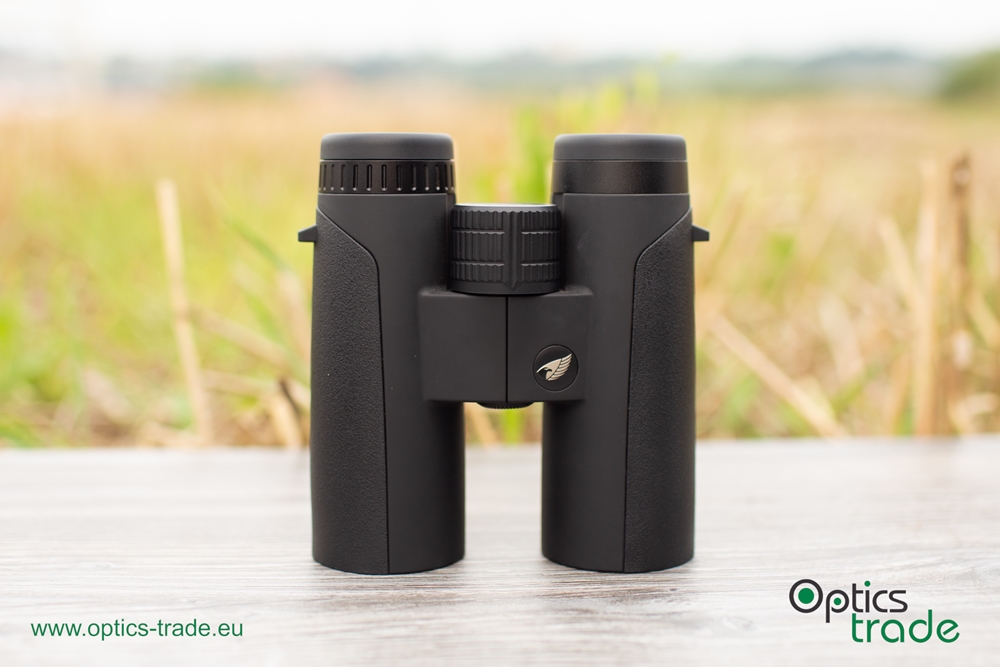
GPO stands for German Precision Optics. This is a new name in the world of optics, but the people running the company have plenty of experience in optics since most of them worked at renowned optics-manufacturing companies in the past. Passion ED 8×42 is a true surprise – even though it costs just a little over 400 €, it impressed us. The build quality is exceptional, something that you don’t expect at this price point. It is well-designed, with subtle details on the housing and excellent eyepieces. It comes in a magnificent box, full of various accessories which complement the optical device. Since GPO is a new brand, it will take some time for them to build customer confidence. The image could have been sharper on the edges, but that is basically its only downside.
| PROS | CONS |
| Magnesium housing | Edge sharpness |
| Build-quality | New brand |
| Elegant, appealing design | |
| Affordable for what it offers |
More details on GPO Passion ED 8×42 in our video review below
GPO Passion ED 8×42
Available on our website. Worldwide shipping.![]()
One of the best choices in mid price class
Steiner Ranger Xtreme 8×42
Steiner is a renowned German optics-manufacturing company with a rich tradition – this fact alone compels many people to purchase Steiner binoculars. Many people debate over the aesthetics of their design. You either like the design of Steiner binoculars or you don’t. Not the most appealing but durable and robust – as such, it is most suitable for hunting purposes. It features winged eyecups which are again a matter of personal preference. It is backed by 10 years of warranty. On top of that, Steiner will repair the binoculars if they get damaged for around 150 €. The narrow apparent field of view is the disadvantage of Steiner Ranger Xtreme, and it is a tad behind some of its competitors in terms of optics. Not a favourite choice of birdwatchers because of its hunting-oriented looks.
| PROS | CONS |
| Extremely durable | Optical performance |
| Winged eyecups | Apparent field of view |
| A renowned manufacturer |
More details on Steiner Ranger Xtreme 8×42 in our video review below
Steiner Ranger Xtreme 8×42
Available on our website. Worldwide shipping.![]()
Great hunting binoculars in the price class between 400 and 800 €.
3.4 800–1500 €
If you are considering the purchase of a premium-brand, European-made binocular, this is where it starts. For certain Premium European companies, this is the entry-level to middle-class for 8×42 binoculars; for other companies, this is the high-end class. By Premium European companies, I am referring to the great trio – Leica, Swarovski and Zeiss. Zeiss has a model called Terra in their offer which is priced at around 450 €, but let’s ignore it since it is made in China and incomparable to Germany-made Zeiss products in terms of quality.
Binoculars in this price class feature a magnesium chassis with plenty of attention paid to the smallest details. Eyecups can be fixed in multiple positions, 3 at least. The optical performance is great, and the differences from one border of the price class to the other are getting smaller compared to the 400–800 € price class. The field of view is large, and even the edges of the image are sharp. Accessories provided with the binoculars are of high quality and packed in a neat box. At least 10 years of warranty is granted, and the binoculars can be serviced long after this period expires. Service takes place in the EU. Single-bridge design prevails still. You can count on these to function for 20 years and longer thanks to the superb build quality – don’t consider going under 800 € if you are planning a long-term purchase.
We tested binoculars from the most notable optics manufacturers, finding the performance of the devices listed below best.
Kahles Helia S 8×42 (Update 2021)
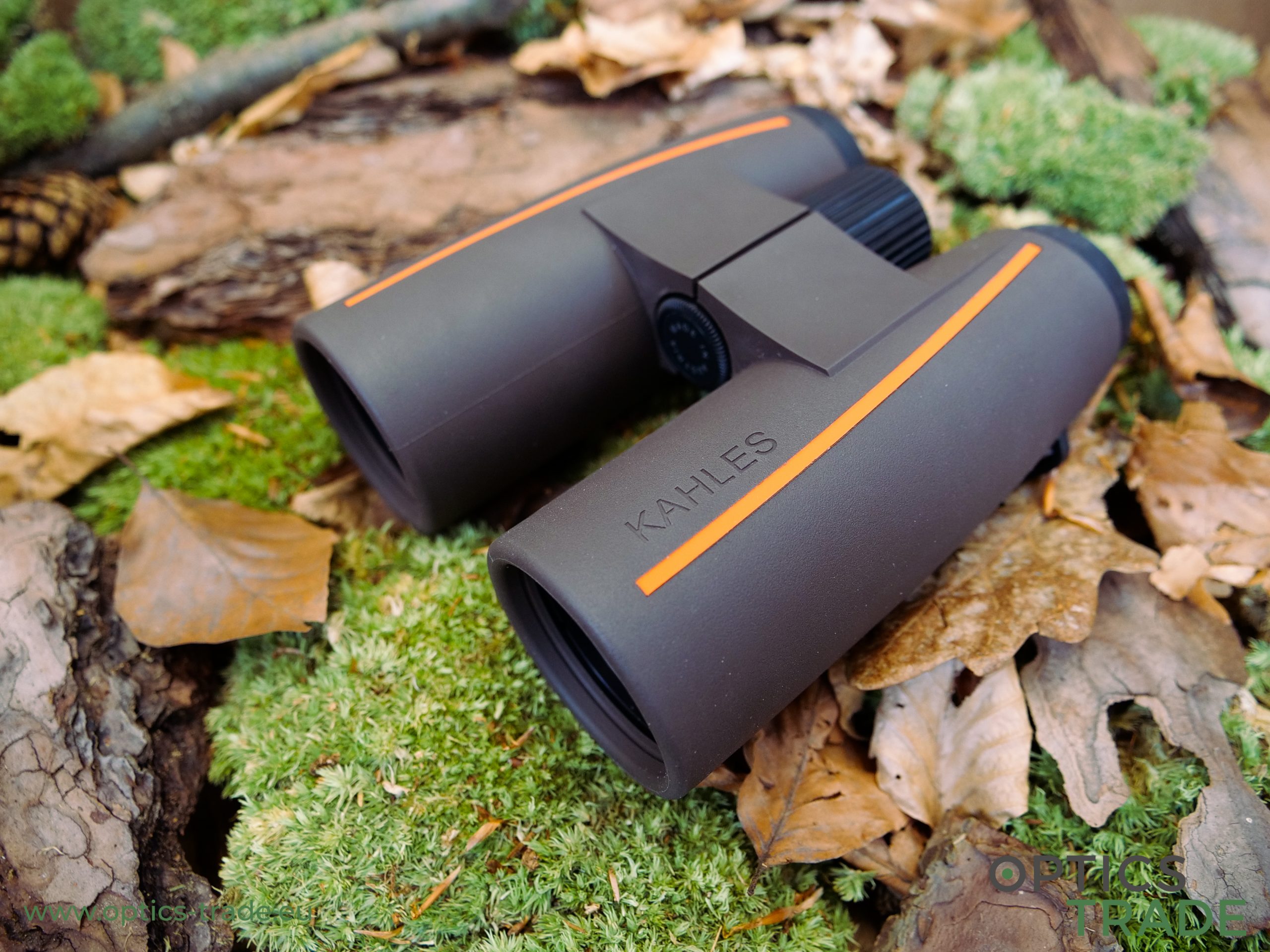
Kahles has been a subsidiary of Swarovski Optik for more than 40 years. Swarovski discontinued their full-size SLC binoculars in 2020, and when Kahles first showed us pictures of their new Helia S binoculars in 2021, we immediately noticed the similarity between the two. After testing them out, we can say with a fair degree of certainty that the optics in Kahles Helia S are identical to the ones in Swarovski SLC. This is great since SLC had dominated the market in the price class around 1700 € before it was discontinued. Helia S is even more affordable, the price is 1500 € (without any discount). It comes in a bold combination of brown and orange. The buyer will be pleased to find out that it features the same quality eyepieces as the SLC. Thanks to the quality coatings and top-notch glass, the image is clear, sharp, and with natural colours. The apparent field of view is amazing – the image fills up the field of view as soon as one looks through, resulting in the immediate ‘wow effect’. The finish could be better, especially the details on the housing, but to lower the price, Kahles had to reduce costs somewhere. A bag for storing the binoculars is not included. The close focus of 3.2 m is also one of its weak points.
| PROS | CONS |
| Optical quality | Close focus of 3.2 m |
| Apparent field of view | Does not come with a bag |
| Quality eyepieces | Finish (details on the housing) |
| Great Colour combination for the housing (brown and orange) | |
| Magnesium Chassis |
More details on Kahles Helia S 8×42 in our video review below
Kahles Helia S 8×42
Available on our website. Worldwide shipping.![]()
One of our best picks in the price class between 800 € and 1.500 €
Maven B1 8×42 (Update 2021)
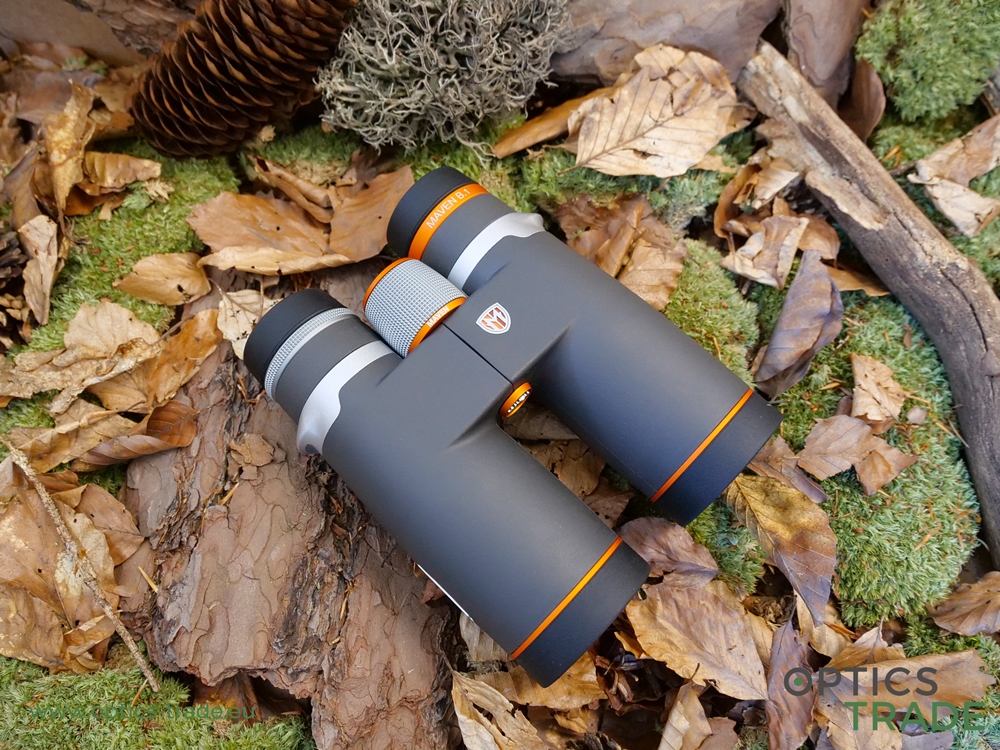
Even though Maven has not been in the sports optics business for long, they know how to play the game. B1 costs a little under 1000 € but impresses in many ways. The housing is made of magnesium and features plenty of details that make it elegant, including quality metal parts (focusing knob, diopter ring). It has a narrow bridge that allows for comfortable handling. The images are impressively sharp, the field of view wide, and the chromatic aberration barely noticeable. B1 is made in Japan. They are a bit on the heavier side and the eyecups – even though they are of high quality – could produce some more resistance when turned. A hard carrying case would be a great substitute for the included soft pouch.
| PROS | CONS |
| Build quality (many metal parts) | Heavy |
| Unique design | Comes with a soft pouch instead of a carrying case |
| Impressive optically | |
| Magnesium housing |
More details on Maven B1 8×42 in our video review below
Maven B1 8×42
Available on our website. Worldwide shipping.![]()
One of our best picks in the price class between 800 € and 1.500 €
Zeiss Conquest HD 8×42

This is where the entry-level starts for Zeiss 8×42 binoculars (If we exclude the made-in-China Zeiss Terra ED). Priced at around 1100 €, these deliver exceptional brightness and an image high in contrast. The field of view is not as good as on SLC but decent. Conquest HD features a typical Zeiss design – an all-black housing with a conspicuous Zeiss logo on the single-hinge bridge. The edge sharpness could have been better, but this is practically the only downside of these Germany-made binoculars. There are two noteworthy coatings that Zeiss uses on the Conquest – T*, a multi-layer coating that increases the light transmission rate, and Lotutec, a coating applied to the external parts of the lenses that prevent the accumulation of dust, dirt, and protects the surface from abrasion. The focus knob runs smoothly, allowing fine adjustments in focusing. As far as the quality of optics is concerned, this is the best buy around 1000 €. Some complain over its short eye relief and thus prefer Leica Trinovid HD. We have to note that Conquest is inferior to SLC in terms of optics but also roughly 500 € more expensive.
| PROS | CONS |
| Great optics for a little over 1000 € | Short eye relief, not the best for glasses users |
| High light transmission rate | Edge sharpness |
| Images high in contrast |
More details on Zeiss Conquest HD 8×42 in our video review below
Zeiss Conquest HD 8×42
Available on our website. Worldwide shipping.![]()
One of our best picks in the price class between 800 € and 1.500 €
3.5 1500 €+
This is where to look if you seek the cream of the crop as only the greatest optical masterpieces can be found in this price class. Great for heavy users of binoculars – avid hunters, expert birders and alike. Most of these binoculars come with an open-bridge design that allows easier handling with one hand and contributes to lower weight. The housing is made of magnesium, and the focusing mechanism is often of the self-lubricating type, allowing for smooth use in the most extreme of temperatures. The field of view offered by these binoculars is huge, images high in contrast, and details clearly distinguishable thanks to the ultimate sharpness. Eyecups can be fixed in multiple positions, often at least four. They come in well-packed boxes, with plenty of high-quality accessories.
Some of the binoculars in this price class come in limited numbers. They hold their value steadily. The warranty provided by the manufacturer is 10 years at least, and all the manufacturers of these premium binoculars are renowned companies with a rich tradition in optics manufacturing (Blaser is the exception, but they too are a well-situated company with a rich history), so you can count on them offering the repair service for many years to come, even after the warranty period expires. Some binoculars can be completely customized to suit the style of the customer.
The competition here is scarce since only a handful of manufacturers can make binoculars this exceptional. Below is a list of binoculars that we consider best buys in this price class; we have to point out that the differences among the great trio – Zeiss Victory SF 8×42, Leica Noctivid 8×42, and Swarovski EL 8×42 – are so minimal that it is difficult to determine which one is the best. Personal preference plays a huge role in this as all these devices are the culmination of human craftsmanship.
Update 2020: Swarovski introduced the NL Pure binoculars which became our number 1 pick after we tested them.
(4 best buys are included in this price class because it is difficult to choose a winner among Zeiss Victory SF, Swarovski EL, and Leica Noctivid)
Swarovski NL Pure 8×42 (Update 2020)
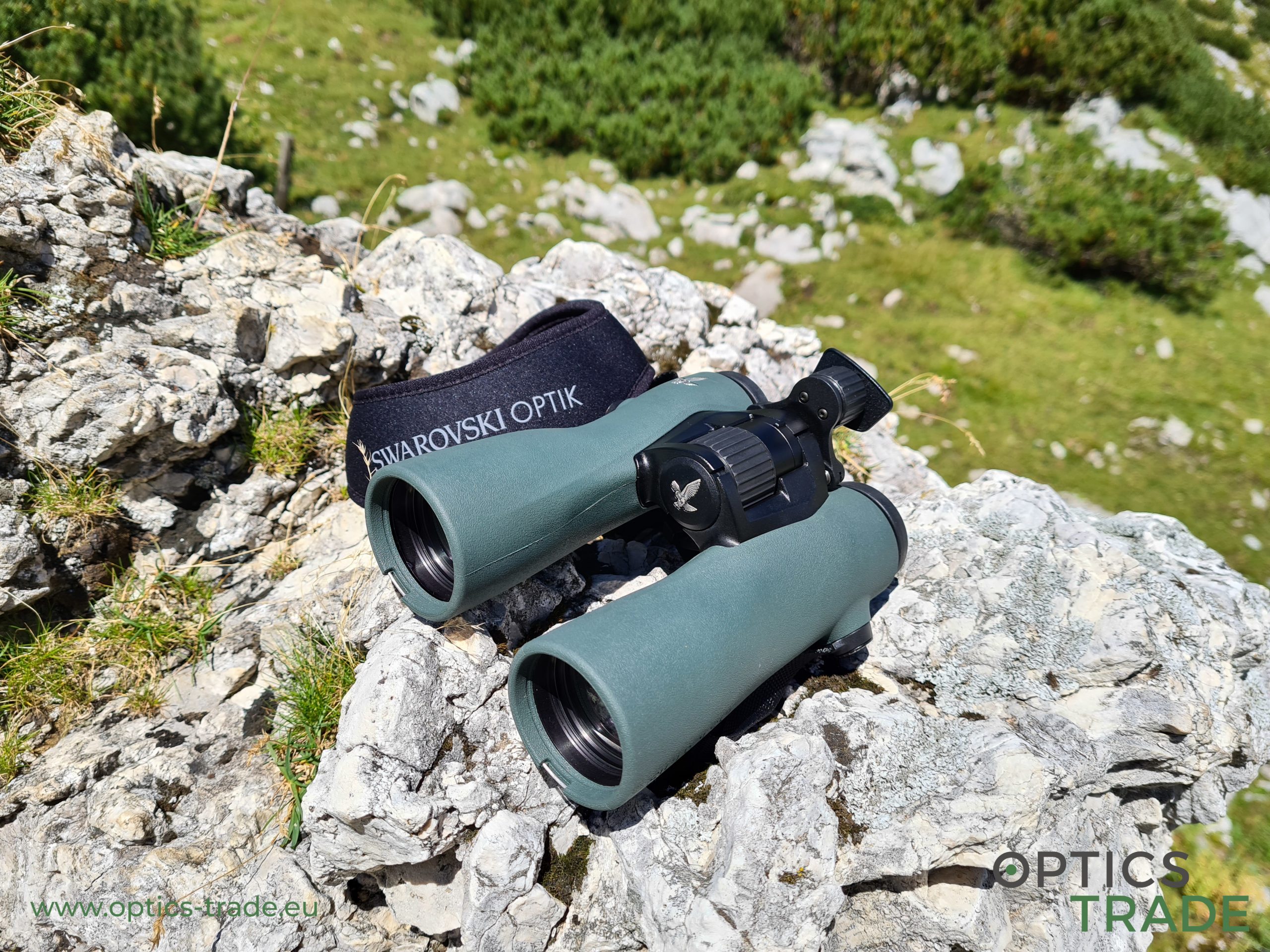
The introduction of the NL Pure series was among the greatest milestones in the field of sports optics in the year 2020. Swarovski took a step forward and presented binoculars of unprecedented quality. NL Pure 8×42 boasts an unparalleled optical performance – the image is clear and sharp edge to edge. Currently (2020), it offers the widest field of view among all 8x magnification binoculars on the market – 159 m at 1000 m. Many of its optical qualities can be attributed to the Swarovision technology which is based on a field flattening lens system. It is not all about optics when it comes to NL Pure; these binoculars also impress in terms of build quality. NL Pure features a single bridge, but it is moved towards the rear for better handling. The barrels taper towards the middle, adding to the ergonomics. Swarovski introduced a new accessory along with their new flagship binoculars called the forehead rest. Once mounted, it provides an additional point of contact with the user’s face, improving stability and increasing viewing comfort. It is available for an extra 129 €. The NL Pure series impresses in all aspects but one – price. With a price tag of nearly 3000 €, these are currently the most expensive full-size binoculars around. A great choice for those who do not settle for anything but perfect.
| PROS | CONS |
| Incredible optical performance | Price |
| Swarovision technology (flat field of view) | |
| Build quality | |
| Quality eyepieces | |
| A nice solution for the strap attachment | |
| Amazing field of view | |
| Ergonomic shape | |
| Compatibility with the forehead rest |
More details on Swarovski NL Pure 8×42 in our video review below
Swarovski NL Pure 8×42
Available on our website. Worldwide shipping.![]()
Our number one pick in the field of 8×42 binoculars
Zeiss Victory SF 8×42

More than a hundred years of experience have allowed Zeiss to devise binoculars that are superb in all aspects. Victory SF was our number one pick back in 2019 – with an outstanding field of view of 148 m at 1000 m; razor-sharp, crystal-clear images, magnesium body, and excellent ergonomics, it was difficult to find any room for improvement. Zeiss uses SCHOTT fluoride glass to achieve perfection. Victory SF combines a triple-bridge design with an optimally positioned focus knob that can be easily accessed, regardless of the length of your fingers. They are quite costly at around 2400 € but are worth every cent.
| PROS | CONS |
| Incredible optically | Eyecups could be of higher quality |
| A huge field of view | |
| High light transmission rate | |
| Triple-bridge design | |
| Elegant appearance |
More details on Zeiss Victory SF 8×42 in our video review below
Zeiss Victory SF 8×42
Available on our website. Worldwide shipping.![]()
One of the best premium 8×42 binoculars
Swarovski EL 8.5×42
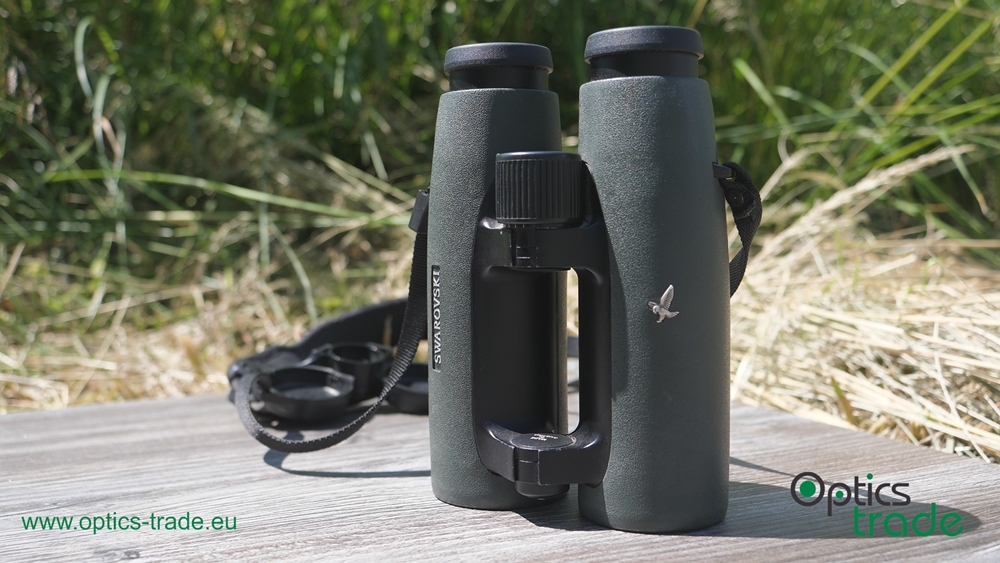
Even though the magnification isn’t 8x, we chose to include this extraordinary binocular because the deviation is minimal. EL’s main advantage over competitors of other brands is the Swarovision technology which is based on field flattening. It results in the immediate ‘WOW’ effect by the user during the first use – thanks to Swarovision, the apparent field of view is enormous, and the image is incredibly sharp edge to edge, allowing the user to clearly discern every detail. For this reason, EL is highly popular among birdwatchers. The field of view of 133 m at 1000 m is great for an 8.5x magnification binocular. The body is made of magnesium, and the open bridge design allows for simple handling with one hand only. Swarovski uses its best coatings on the lenses (Swarobright, Swarotop, Swarodur, Swaroclean) to enhance the user experience in every possible way. While many people are great fans of the Swarovision technology, some have a strong disliking for it. It can cause nausea, especially during panning. They are priced at around 2400 €, the same as Victory SF. Update 2020: In 2020, when NL Pure was introduced, the price of EL dropped substantially.
| PROS | CONS |
| Incredible optically | Some people dislike the flat field of view (Swarovision) |
| A flat field of view (some dislike this) | |
| Huge apparent field of view | |
| High light transmission rate | |
| Open-bridge design | |
| A nice solution for the strap attachment | |
| Update 2020:great price |
More details on Swarovski EL 8.5×42 in our video review below
Swarovski EL 8.5×42
Available on our website. Worldwide shipping.![]()
One of the best premium 8.5×42 binoculars
Leica Noctivid 8×42

Leica’s flagship binoculars, Noctivid, are a masterpiece both aesthetically and optically. A glance at their exterior is enough for one to see that these are one of the best-looking binoculars currently on the market – attention is paid to every detail. The magnesium chassis is rubberized for a better grip, and the open-bridge design facilitates use with one hand. With SCHOTT glass and various high-quality coatings (including HDC® Plus and AquaDura®) amazing optical performance is achieved. The twist-up eyecups can be fixed in four positions. It is similarly priced as Swarovski EL and Victory SF. Noctivid is the product of Leica’s 100-year research and determination in the field of optics.
| PROS | CONS |
| Incredible optically | The field of view could be better |
| A masterpiece in terms of design | |
| Outstanding build quality | |
| High light transmission rate | |
| Open-bridge design |
More details on Leica Noctivid 8×42 in our video review below
Leica Noctivid 8×42
Available on our website. Worldwide shipping.![]()
One of the best premium 8×42 binoculars
4. Conclusion
With 8×42 binoculars, you can’t go wrong. This is the most versatile configuration that you can find on the market, excellent for the novice as well as experienced users. We included five price ranges and provided the general features of each to give you an insight of what you are getting for the money. In the field of binoculars, improvements are not as rapid as in the mobile phone industry. Nevertheless, with so many optics manufacturing companies in business, the battle for dominion over the market has never been as harsh as it is now, resulting in frequent product updates. For this reason, this guide will be updated occasionally to remain up to date.
5. Past best-buys
Here, the best buys from the previous years are listed. They have either been replaced with a new-generation model, pushed out of the ‘best buys’ section by a more competitive product, or moved here for another reason (we used to list 5–6 binoculars in the ‘best buys’ section but ultimately decided that up to 3 best buys in a single price class are enough).
5.1 100–400 €
Vortex Diamondback 8×42
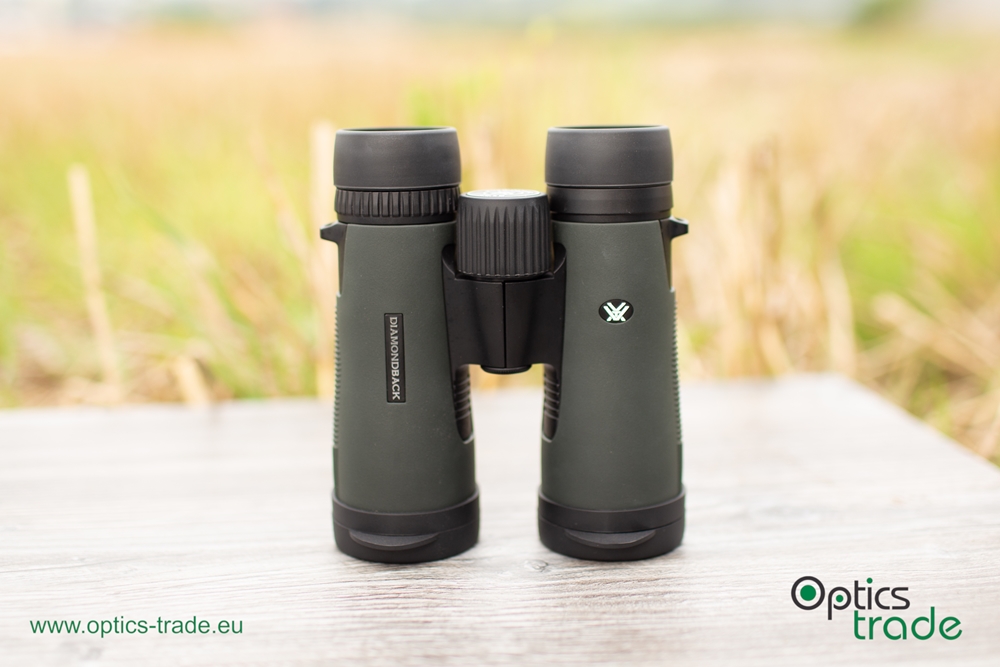
We can’t talk entry-level binoculars and skip Vortex. They’ve revolutionized the market by combining great optical quality with top-notch warranty terms. Diamondback is known to offer plenty for the money. It features magnesium housing which is a true rarity in this price class. On top of that, its optical performance is more than decent for what you pay for. If it gets damaged, Vortex will repair or give you a new one for free. It doesn’t have the best edge sharpness, though, and chromatic aberration can be noticed on the edges of the field of view when observing. Also, glasses users have some trouble using them because of insufficient eye relief. Still, without doubt, one of the best buys in this price range. As of the second half of 2019, the updated HD models are available.
| PROS | CONS |
| Great warranty terms | Edge sharpness |
| Magnesium housing | Chromatic aberration on the edges of the FOV |
| Great optical quality for the money | Insufficient eye relief for glasses wearers |
More details on Vortex Diamondback 8×42 in our video review below
Delta Optical Chase 8×42 ED – removed from the ‘best buys’ section in 2021
We used to list 5–6 binoculars in the ‘best buys’ section but ultimately decided that up to 3 best buys in a single price class are enough, which is why we removed Delta Optical Chase 8×42 ED from there in 2021. This was the accompanying test:
We couldn’t deny Delta Optical Chase 8×42 ED a place in this list. The build quality of these binoculars is on a really high level if we consider the price and so are the optics. We love the solution that Delta used for the installation of objective lens covers – there is a notch on each of the barrels in which you fix the strap of the objective cover made of rubber. A simple solution but it works. Some will agree that the design is a bit outdated, and the price tag of around 350 € brings it close to the 400 € point where there are plenty of formidable competitors such as Athlon Midas 8×42 and GPO Passion ED 8×42.
| PROS | CONS |
| Build-quality | Outdated design |
| Impressive optical quality for the money | Quite heavy |
| Nice solution for the objective covers | Close to the 400 € price point |
More details on Delta Optical Chase 8×42 ED in our video review below
5.2 400–800 €
Hawke Sapphire ED 8×42 – removed from the ‘best buys’ section in 2021
We used to list 5–6 binoculars in the ‘best buys’ section but ultimately decided that up to 3 best buys in a single price class are enough, which is why we removed Hawke Sapphire ED 8×42 from there in 2021. This was the accompanying test:
Sapphire ED 8×42 deserves a spot on this list. The accessories provided in the box are among the most exquisite in this price class, and they go well with the elegant design of the binoculars. Sapphire ED is not only extremely appealing to the eye, but also great in terms of optics. It is lightweight and compact. The chassis is made of magnesium, which not many binoculars in this price class boast. The field of view is amazing at 142 m at 1000 m. The focusing wheel is somewhat too easy to turn, which is possibly the only disadvantage of these great binoculars. They are manufactured in China.
| PROS | CONS |
| Appealing, modern design | Focusing wheel too easy to turn |
| Magnesium housing | |
| A big field of view | |
| High-quality accessories |
More details on Hawke Sapphire ED 8×42 in our video review below
Athlon Midas 8×42 – removed from the ‘best buys’ section in 2021
We used to list 5–6 binoculars in the ‘best buys’ section but ultimately decided that up to 3 best buys in a single price class are enough, which is why we removed Athlon Midas 8×42 from there in 2021. This was the accompanying test:
We believe that Athlon Midas 8×42 deserves to be a ‘notable mention’ in this class. The main reason for that is that it performs incredibly well for the price of 420 €. It is a worthy competitor of GPO Passion ED 8×42 in terms of optics. On the outside, it looks a bit dull and outdated, and the wide bridge is not aesthetic nor practical. The impressive optical performance for the price is the main reason for including it here.
| PROS | CONS |
| Optically great for the money | Outdated design |
| Wide bridge |
Vortex Viper HD 8×42
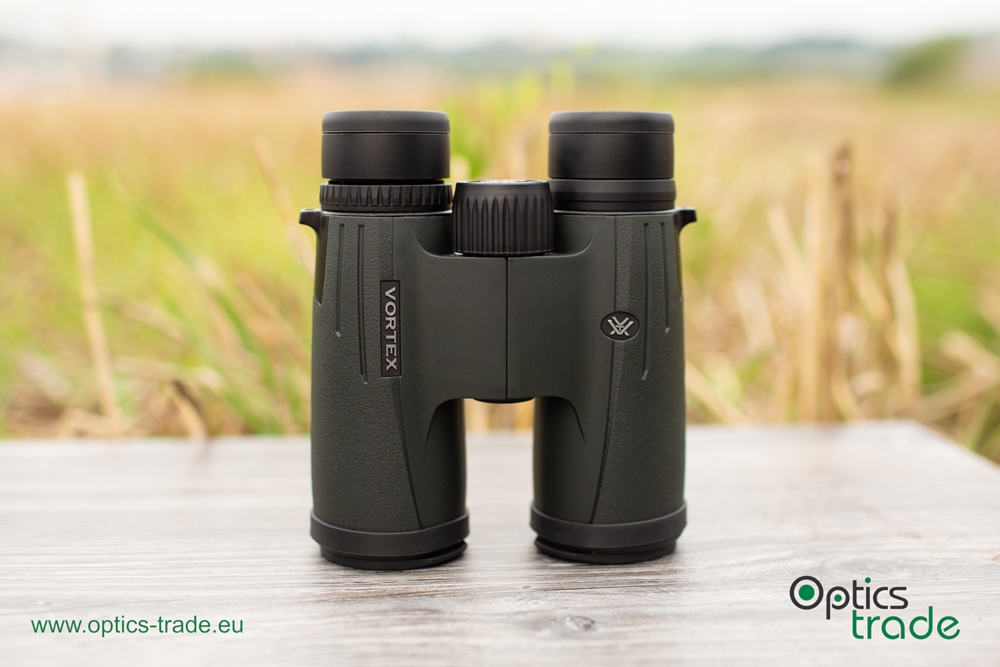
Many refer to this binocular as the king of the middle class. The first and second generation, made in Japan, were great but had a narrow field of view. Vortex improved that flaw with the third generation, the production of which took place in China shortly after the announcement of the series. A few months after, the production was moved to the Philippines. Many people have complained over the fact that Viper HD is no longer a Japanese product, but since its optical performance is great and better than on the previous version, complaining over its origins seems unreasonable. As befits Vortex, the design of the Viper HD is modern, and the user gets a stylish, GlassPak™ binocular harness in the box. The optics are incredibly sharp and bright, not to mention that these binoculars are a completely safe purchase thanks to the Vortex VIP warranty. Its downsides? Gen III is no longer made in Japan, which is a huge turn-off for some, and it is disliked by glasses wearers because of the insufficient eye relief.
| PROS | CONS |
| Optical performance | No longer made in Japan |
| Vortex VIP warranty | Insufficient eye relief for glasses wearers |
| GlassPak™ binocular harness included |
More details on Vortex Viper HD 8×42 in our video review below
5.3 800–1500 €
Leica Trinovid 8×42 HD – removed from the ‘best buys’ section in 2021
We removed Leica Trinovid 8×42 HD from the best buys section after testing Maven B1 8×42 binoculars in 2021. As B1 proved to be better overall (optics & build quality), it took a position among the best buys in the price class of 800-1500 €, pushing Leica Trinovid 8×42 HD out. This was the accompanying text:
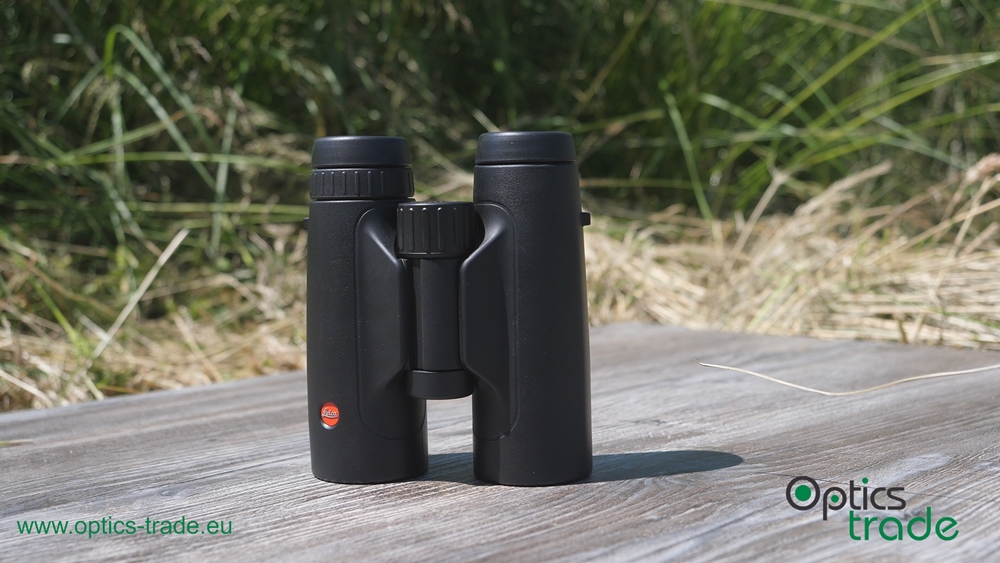
We can’t deny Leica a spot in our list of best buys in this price class. With a price of around 1000 €, Trinovid HD competes against Conquest HD, and many have posted a comparison of these two binoculars on the web. Trinovid HD is all in black with a red and white Leica logo on the right barrel. If we compare it to Conquest HD, Trinovid is a bit more elegant, with more attention paid to the subtle details on the housing. Furthermore, it surpasses the Conquest in term of build quality, though not significantly. Optically, we’d say that Conquest is a little bit better as it offers a bigger field of view and a slightly better central sharpness than Leica Trinovid. Interestingly, though, we found Trinovid to have better edge sharpness than Conquest. The eyepieces on Trinovid are of high quality with 4 positions altogether, while the chassis is made of magnesium. They are made in Leica’s factory in Portugal. Leica doesn’t use its dust/dirt repellent AquaDura coating on the external parts of the lenses of Trinovid HD.
| PROS | CONS |
| Elegant, appealing design | Optically not the best in class |
| Build quality | Field of view |
| Edge sharpness | |
| Magnesium housing |
Meopta Meostar B1 8×42 – removed from the ‘best buys’ section in 2021
We used to list 5–6 binoculars in the ‘best buys’ section but ultimately decided that up to 3 best buys in a single price class are enough, which is why we removed Meopta Meostar B1 8×42 from there in 2021. This was the accompanying test:
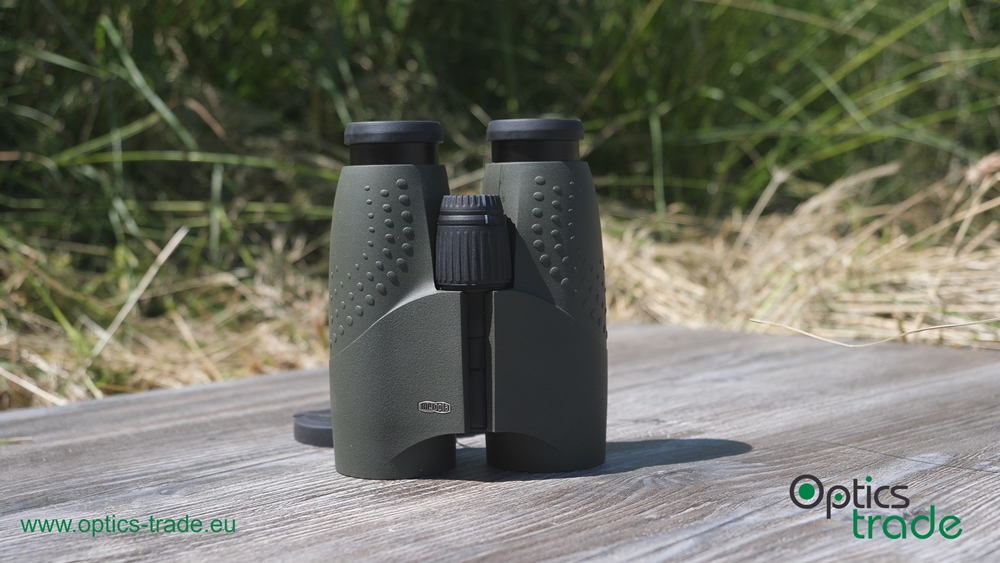
I chose to include these binoculars primarily for their build quality. It is an undeniable fact that they are built like a tank. Not many binoculars in this price range are more durable and robust than the Meostar. Weighing nearly 900 grams, they aren’t the best companion on long hikes. The rubber covering the exterior is of high quality and dotted to ensure a firm grip. The field of view of 137 meters at 1000 meters is more than you can expect at this price point. The strap lugs are flush with the surface, so they will never be in your way. Optically, they are very decent for the price. Only the 10×42 model is available in the ‘HD’ version which features improved optics, but the non-HD models are not that far behind in terms of quality. As of 2019, Meostar binoculars have a locking dioptre. Meopta has been using the same form factor for these binoculars since 2005, which is the reason for their outdated appearance.
| PROS | CONS |
| Build quality is exceptional | Outdated design |
| Field of view | Bulky and heavy |
| Strap lugs recess into the barrels |
Kowa Genesis 8.5×44 Prominar – removed from the ‘best buys’ section in 2021
We used to list 5–6 binoculars in the ‘best buys’ section but ultimately decided that up to 3 best buys in a single price class are enough, which is why we removed Kowa Genesis 8.5×44 Prominar from there in 2021. This was the accompanying test:
Though Kowa’s flagship, Japan-made binoculars are not of the 8×42 type, denying them a place in this guide would be unacceptable. The chassis is made of magnesium and dressed in high-quality rubber to ensure a firm grip and grant protection from impacts. The field of view of 123 m at 1000 meters would be rather poor for an 8x magnification binocular but is satisfactory for an 8.5x magnification. Genesis boasts a high light transmission rate and impressively low levels of chromatic aberration. The closest focus distance of 1.6 meters makes it a worthy companion for short-range observing as well. The focusing knob moves smoothly and can be easily accessed during use. At 950 grams, these are far from lightweight and considerably heavier than the competition, partly because of the larger objective lenses.
| PROS | CONS |
| Build quality | Heavy |
| High light transmission rate | Field of view could be better |
| Low levels of chromatic aberration | |
| Close focus of 1.6 m |
Swarovski SLC 8×42 W B – removed from the ‘best buys’ section in 2021
Swarovski SLC was removed from the ‘best buys’ section for two reasons. Firstly, it was discontinued in 2020. Secondly, Kahles introduced Helia S in 2021 which is identical to Swarovski SLC (Kahles has been a subsidiary of Swarovski Optik for more than 40 years). Helia S thus replaced the SLC as the #1 pick in the 800–1500 € price class.
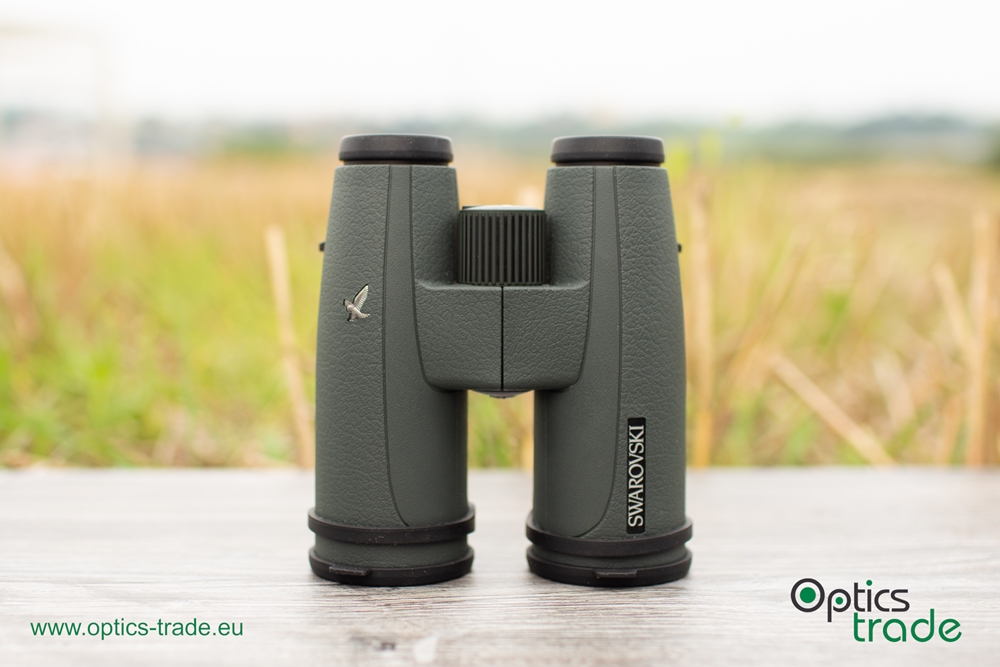
You can’t look through these and not be impressed. The apparent field of view is so big as to cover up almost the entire sight during use. With a price of around 1500 €, SLC is among the more expensive binoculars that we tested from this price class (the other best buys listed below are closer to the 1000 € price point) and the unquestionable winner as there are no comparable devices at this price point. The optical quality which can be attributed to Swarovski’s exceptional coatings (Swarobright, Swarotop, Swarodur, Swaroclean) is undoubtedly its strongest point. The design of the binoculars is simple yet highly appealing. They are very compact and lightweight for a 42mm objective lens binocular thanks to the magnesium chassis. The green rubber that covers the high-quality body is exceptional, providing firm grip as well as protection against impacts. The eyecups can be removed and replaced when they start showing wear and tear. Some complain over its bridge, claiming that it bends too smoothly. Close focus of 3.2 m is another one of its weak points. Currently, the third generation of these binoculars is available.
| PROS | CONS |
| Optical quality | Bridge bends too smoothly |
| Amazing apparent field of view | Close focus of 3.2 m |
| Removable eyecups which can be easily replaced | |
| High light transmission rate | |
| Compact, lightweight | |
| Magnesium chassis |
5.4 1500 € +
Leica Ultravid HD-Plus 8×42 – removed from the ‘best buys’ section in 2020
We removed Leica Ultravid HD-Plus from the ‘best buys’ section when Swarovski introduced the NL Pure 8×42 binoculars in 2020. NL Pure was added to the best buys, pushing out the Ultravid which at the time was the fourth-best in the price class above 1500 €.

This was the accompanying test:
Another Leica on this list. Noctivid is the flagship series of Leica’s binoculars, but Ultravid HD-Plus is not far behind. It features a magnesium chassis, SCHOTT glass, an outstandingly high light transmission rate, and all the best Leica coatings on the lenses. How does it differ from Noctivid? Well, for starters, it features a standard single-hinge bridge instead of the open one, making it harder to comfortably observe with one hand. The field of view is slightly narrower, and it is somewhat inferior to Noctivid in terms of optical quality. Ultravid HD-Plus, however, is noticeably shorter and lighter. It is priced at around 2100 €. Throughout the years, Leica launched plenty of limited-edition series under this name with build quality even higher than that of Noctivid. On top of that, a fully customized Leica Ultravid HD-Plus can be ordered, but you will have to dig even deeper into your pockets should you want one.
| PROS | CONS |
| Build quality | Single-bridge design |
| Shorter and lighter than Noctivid | Only 300 € cheaper than Noctivid |
| Customizable | |
| Limited editions |
Blaser Primus 8×42 – removed from the ‘best buys’ section in 2021
We used to list 5–6 binoculars in the ‘best buys’ section but ultimately decided that up to 3 best buys in a single price class are enough, which is why we removed Blaser Primus 8×42 from there in 2021. This was the accompanying test:
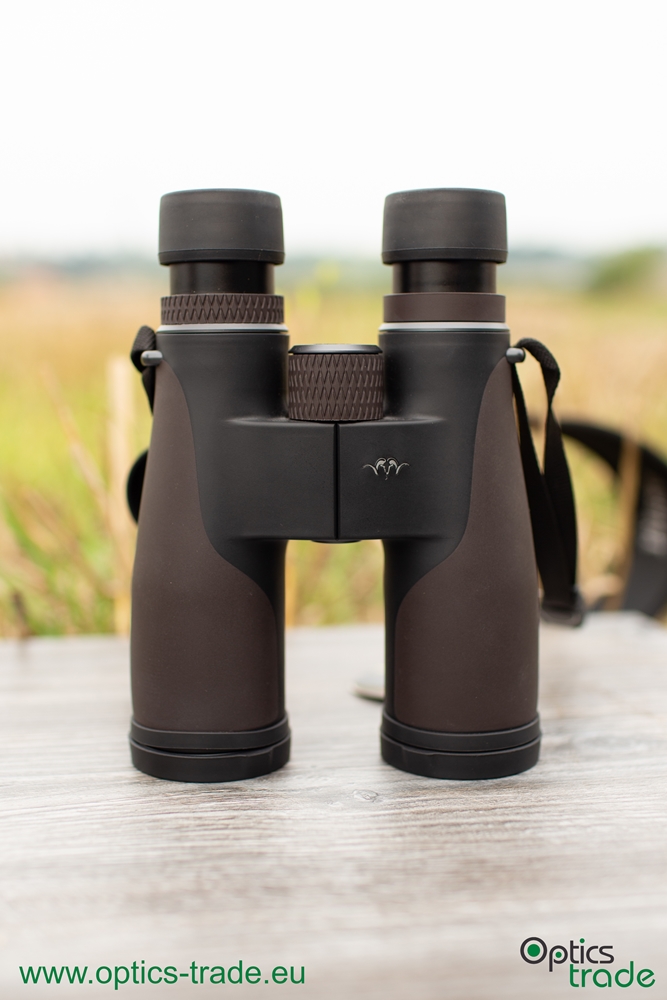
A while ago, Blaser entered the binoculars’ market with the Primus series. They went straight for the high-end class, pricing their binoculars around the 2000 € mark. Even though Blaser is a renowned firearm manufacturing company, leaping into the world of high-end optics is a bold move. So, can Primus 8×42 compete against the renowned premium binoculars of German and Austrian origin? When it comes to performance in the dusk, it can outperform them thanks to the Abbe-Koenig prisms used. As regards other optical qualities, such as central and edge sharpness, though, it is not yet there. The design of the binoculars is modern, and the combination of brown and black makes them stand out of the crowd. They are quite longer than its competition because of the Abbe-Koenig prisms inside. This type of prisms is generally limited to the binoculars with a bigger objective lens, which is why Primus 8×42 is a great choice for those looking for a more compact version of a binocular designed for dusk use. It comes in an elegant box with plenty of accessories.
| PROS | CONS |
| High light transmission rate thanks to Abbe-Koenig prisms | Blaser is a newcomer in the world of optics |
| Appealing, unique design | Longer and heavier than competition |
| Not as optically perfected as the binoculars listed above |
6. Glossary
6.1 Magnification
Magnification is an optical parameter which enlarges/zooms the viewing image and makes the observed object seem bigger. For example, with magnification factor 10 we see objects 10 times larger, which means if an object is 0.1 m high and 100 m away we see it 1 m large. In other words, it’s the same observing the object that’s 100 meters away with a 10x binoculars as watching it with the naked eye 10 meters away. In choosing the right magnification for fixed magnification optical products, practice shows that the most useful magnifications are between 7x and 10x, where average people seem to handle optics without too much hand tremor.
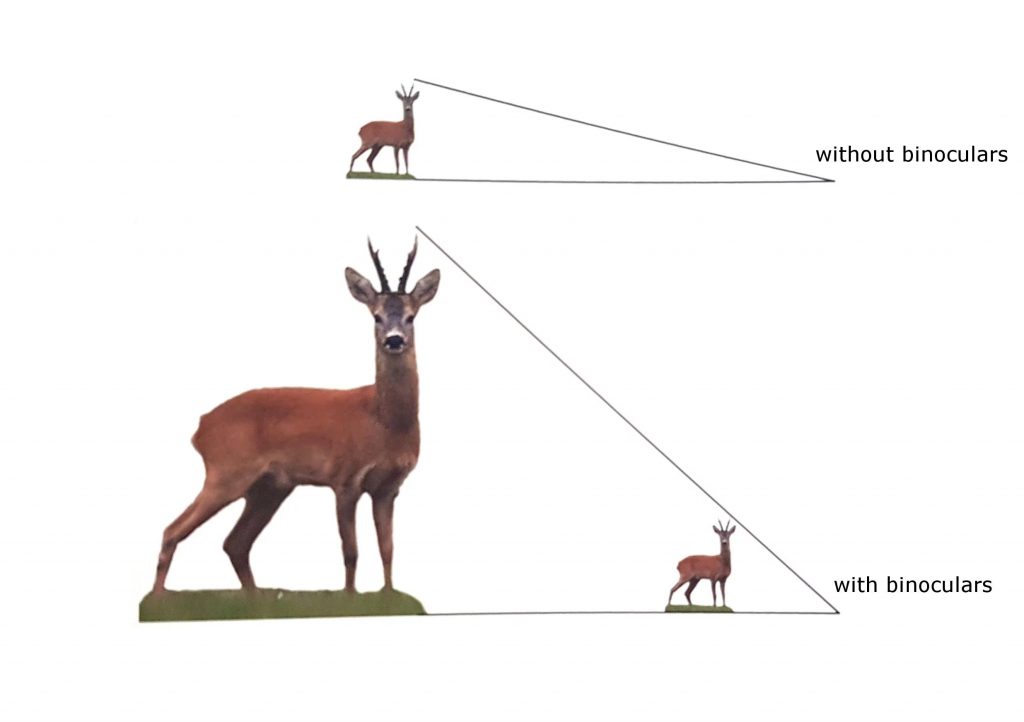
6.1.1 Fixed magnification
Optical products with fixed magnification are designed in a way that they allow only one magnification of a viewing object. Due to a smaller number of lenses used in their construction, they are optically brighter and have a lower loss of brightness. The number of lenses contributes to its smaller size and lighter weight in comparison to optics with variable magnification. Most binoculars tend to have fixed magnification, whereas with riflescopes it’s getting rarer each year. Normally this kind of optical products are easier to use and cheaper. They also offer better optical performance, especially in terms of the light transmission rate.
6.1.2 Variable magnification
Variable magnification simply means that the optical product is designed in a way where you can change the magnification of a certain area. This consequently changes the viewing angle, where higher magnification means smaller/narrower viewing angle and lower magnification means a wider viewing angle. Variable magnification adds to the versatility and general usefulness.
6.2 Lens diameter
Lens diameter represents the second value in the product’s name/designation. For example, 10×42 optics have 42 mm diameter of the lens at the front (those that are closer to the viewing object). It is known that the bigger the lens, the more light goes through and the image we see is brighter. All of this, however, depends on the magnification and quality of a certain optical product. Although the bigger lens diameter in binoculars is better, the size adds up on the weight, making it more heavy and difficult to handle.

The most common lens diameters are 24 mm, 42 mm, 50 mm and 56 mm.
6.3 Exit pupil
Exit pupil is a circle from which the light is being transferred to your eye through the optical product. When you hold the optics a bit far away from your eyes towards a light, exit pupil can be seen as a bright circle in the center of each eyepiece. The larger the exit pupil the more light can reach the eye and the image appears brighter. This is why the exit pupil plays an important part in the optical products in poor light conditions at dawn or dusk. Size of the exit pupil also determines how comfortable viewing through an optical product really is. An important factor is also the size of the eye box, which is a space where the eye still has an entire picture, without any tunnel vision or blurry edges. Bigger eye box means more flexibility of the eye position and therefore more comfortable viewing because the eye can move in several directions within the eye box and still obtain a full image.
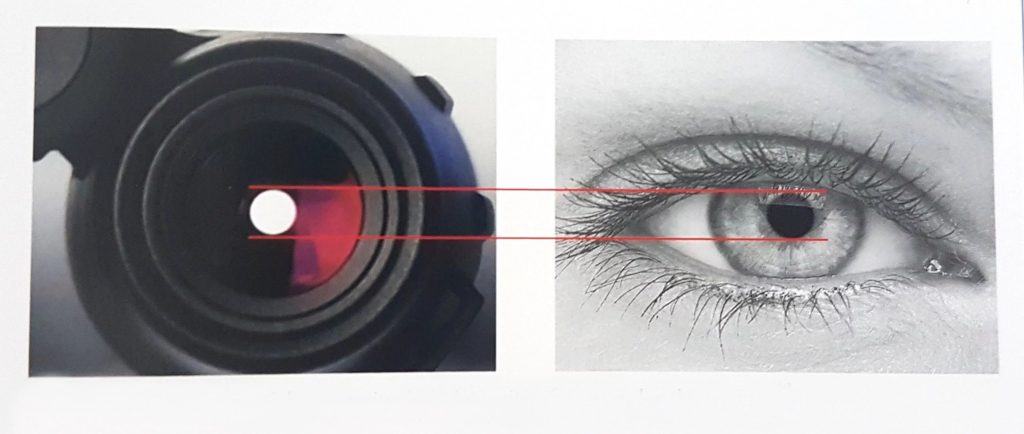
The diameter of the exit pupil is calculated by dividing the lens diameter with magnification. E. g. 8×50 binoculars have an exit pupil in the diameter of 6.25 mm.
To ensure a brighter image, the eye pupil in low light conditions has to be at least as big as the exit pupil. This way there’s no loss of light and the image is as bright as possible. However, the maximum diameter of the eye pupil depends on age. At night, children’s eye pupils can widen up to 7 mm, while with aging they decrease to a maximum of 4 mm. So if the viewer’s pupils can only be open up to 4 mm, the 7 mm exit pupil cannot be fully utilized. It may contribute to a more comfortable viewing, but not to brighter image.
In daylight, when the eye pupil is open up to 3 mm, all the optics with exit pupil bigger than 3 mm are equally bright. For example, the 8×30 binoculars with 3.75 mm exit pupil are no brighter than 8×56 binoculars with 7 mm exit pupil. Those with 7 mm are however more comfortable to use since they’re less sensitive to the eye position (they have bigger eye-box).
6.4 Field of view
Field of view is an area you see when looking through the optical product. Although it primarily depends on the build of the eyepiece, it is hugely affected by magnification. If you look through two binoculars of the same model but with different magnification, you can see that the one with lower magnification factor will have a wider field of view. So when comparing binoculars, you must compare the ones with the same magnification. With binoculars, spotting scopes and other optical products it’s measured at 1000 m.
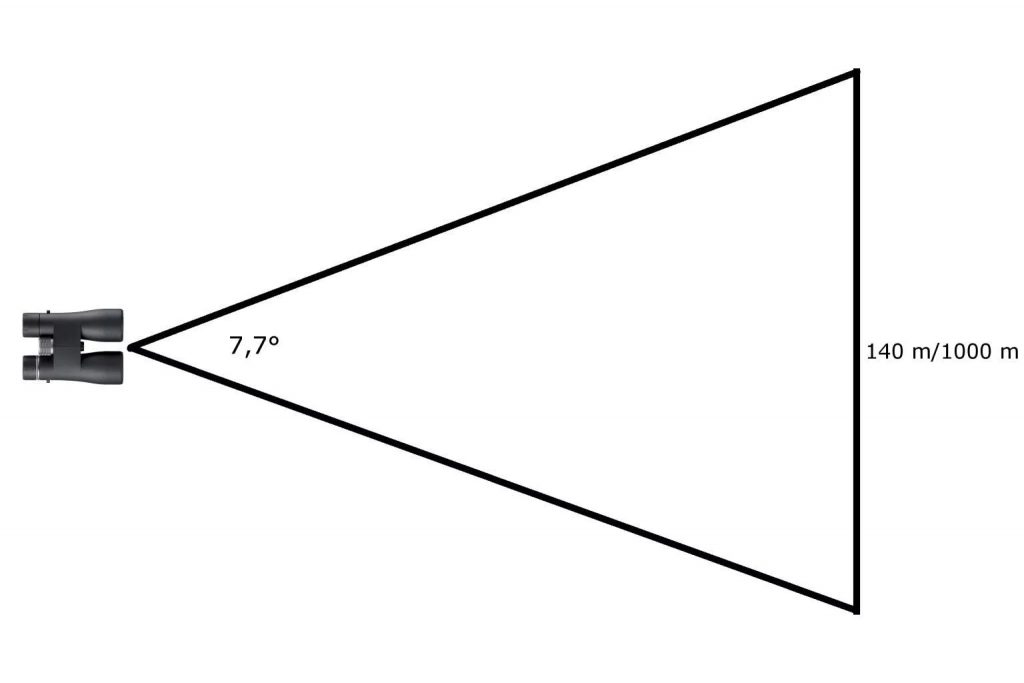
With binoculars, a field of view with more than 140 m at 1000 m distance is considered a wide angle, while with riflescopes it is with a field of view over 38 m at 100 m. Wide angle is particularly useful in bird-watching. It is also important to mention that the size and lens diameter of optical products are not indicators of their field of view – bigger housing doesn’t automatically mean wider field of view.
Field of view can be expressed in two values – degrees or meters.
Degrees:
One degree is 17.5 m at 1000 m / 1.75 m at 100 m.
If you divide the field of view given in meters by 17.5 you get the field of view in degrees.
Meters:
If you multiply degrees with 17.5 you get the field of view at 1000m.
6.5 Apparent field of view
The apparent field of view is a value in degrees that represents the viewing angle of an image you see through the eyepiece. Two binoculars that share the same magnification, lens diameter and field of view don’t necessarily have the same apparent field of view, because it depends on the structure of the lenses inside an eyepiece. It’s simply a subjective impression of the field of view.
Apparent field of view is also depending on the eye relief distance. Shorter eye relief means wider apparent field of view. But if comparing two different binoculars with the same eye relief, the one with the larger eye lens in the eyepiece will have larger viewer field.
It can be calculated by multiplying the actual field of view with the scope’s magnification. Higher value is better as it makes the image appear wider and bigger.

6.6 Prism types
Most modern binoculars are made with an element called prism which is responsible for the rotation of the image upright as the viewer sees it. Prism in binoculars also determines their size, shape, optical features and plays an important part in providing image quality of binoculars. However, prism is the most neglected factor in the process of buying binoculars. There are many types of prisms present which normally determine the purpose of a certain binoculars – whether they are for hunting, marine, bird watching etc.

6.6.1 Porro Prism Binoculars
Binoculars that contains Porro prism (named after Italian physic Ignazio Porro) in their optical construction were predominantly the first type of binoculars on the market. In the last couple of decades, binoculars with Roof prisms (either Schmidt-Pechan or Abbe- Köning) became more popular, due to their compactness and water-tightness. This traditional arrangement of binoculars provided by Porro-prisms makes objective lenses further apart and thus offering a higher light transmission rate. Images are not only brighter and sharper but also have a better depth of field, offering realistic 3D images and wider field of view. Many Porro prism binoculars have also focusing mechanism separated for each eye, which can be very useful in low-light situations, when observing at dusk and at dawn. Even though Porro prism binoculars are becoming rare in today’s times, this traditional arrangement makes them more affordable due to less expensive manufacturing. But wider design makes them heavier and difficult to hold in hands and they are less watertight and also less rugged, providing a less secure grip. The other disadvantage of Porro prism binoculars is also the lack of adjustable eyepieces, which in most cases leads to problems when using the binoculars with glasses.
6.6.2 Abbe/Koenig Roof Prism & Schmidt/Pechan Roof Prism Binoculars
Binoculars with roof-like prisms in their optical construction provide compact design due to straight-line position of eyepieces and objective lenses. They are more expensive due to complex manufacturing and are providing many advantages for more demanding users. They are less sensitive to impacts and abrasions and are incredibly impervious for water and dust entering the construction. They are usually purged with nitrogen or argon gas, which also helps to eliminate internal glass fogging. Compared to Porro prism binoculars, they are more likely to withstand extreme weather conditions. The very good ergonomic design of this straight-line construction makes them less difficult to hold in hands and eases your portability immensely. But compared to Porro prism binoculars, this construction makes light transmission less permeable and thus providing darker and less sharp images.
The main difference between both types of binoculars with Roof prism is that those with Schmidt – Pechan prisms tend to be smaller and less expensive, while those with Abbe – Köning prisms tend to have better light transmission rate and have a longer design.
6.7 Lens coatings
Optical products have many lenses in their housing. With each lens, about 5% of the light passing through is lost. This can be solved with an application of coatings on the glass surfaces. With years the technology of coatings changed. At first, they used only one layer, where the reduction of the loss was to 2% per surface. Today they use multiple layers of coatings where there’s minimal loss of light – 0.1% per surface. The best binoculars have even 95% of the light transmitted to the eye, through all their lenses.
With the increasing transmission of the light, the coating is also important as a protectant of the optical glass and to ensure the true color fidelity, so the colors when entering are the same when exiting binoculars/riflescope. Above all, coatings also increase the image quality because all the light bouncing around on the inside can cover up detail and blur colors.
The process of applying coatings has to be precise, otherwise, it can contribute to a hazy and blurred image. They must be spread evenly and thinly to ensure the best quality. The better the coatings, the more expensive the optical product.
Lens coatings are as important as the quality of the lenses themselves. You can easily check whether your optical product has coatings – if you look at the reflection and it shows multiple colors such as purple, green or yellow the lenses are definitely coated. On the opposite, lenses with no coatings have a clear reflection without showing any colors.
There are many different ways of applying lens coatings:
- Coated: where one or more glass surfaces are coated with one thin anti-reflective layer.
- Fully coated: where all glass surfaces are coated in one thin anti-reflective layer.
- Multicoated: where one or more glass surfaces are coated in multiple layers. Light transmission is more than 75%.
- Fully multicoated: where all glass surfaces are coated in multiple layers. Light transmission is more than 85%.
- Outer surface coating: coating on the outer glass surface which protects the lens from external dew (especially in the winter), partially from dirt and other impurities. They can have different names, depending on the manufacturer (LotuTec, Swarodur, AquaDura)
6.8 Focusing system
Depending on the purpose of use, there are two focusing systems available in binoculars. Most common is central focusing system, which is almost without an exception present in every roof prism binoculars. The other, less occurring system, is an individual eyepiece focusing, which is most useful in marine (because of the water resistance) and extreme low light situations. Binoculars with this kind of focusing system have an advantage in setting the right focus only once for each eye, which is especially useful when viewing in the dark where it’s not necessary to set the focus again.
With central focusing, it’s often difficult to focus the image in the dark, because there is not enough light to see whether the object is sharp or not.
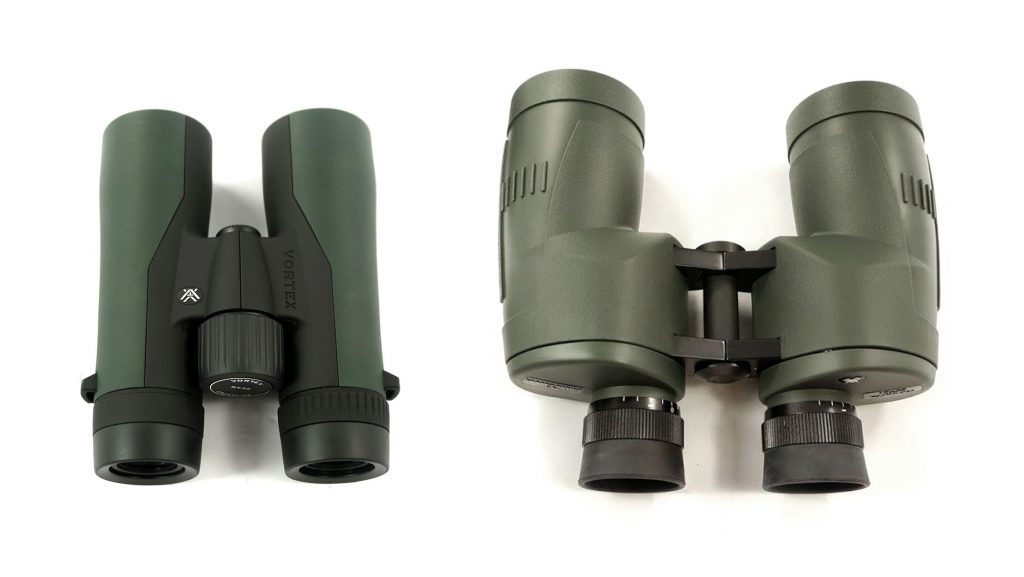
Source: Optics Trade
6.8.1 Binoculars with central focusing
Binoculars with central focusing have a central wheel that is able to provide perfectly sharp images. With central focus knob, you adjust the focus of both barrels at the same time, moving lenses simultaneously. When choosing between binoculars with a central focusing system it’s important to look for its design and performance. Depending on the manufacturer, some binoculars provide sturdier focusing and some very smooth focusing, which is especially suitable for dynamic situations. Focusing throw also varies from binos to binos, it takes more time for setting a proper focus with very long focusing throw, than with the ones with shorter one. When it comes to ergonomic design, most of binoculars provide a central knob with different bulges for a better grip, very convenient when wearing gloves. Since central focusing wheel doesn’t eliminate differences in both eyes, diopter on the upper side of the barrel is included.
6.8.2 Binoculars with individual focusing
Individual focusing system provides focusing on each eye separately. On the upper side of both barrels lie focusing rings – diopters, with the numbers for setting a proper focus by moving lenses individually. Majority of binoculars uses the central rotating knob, so this arrangement is not that frequent and most commonly found on Porro prism binoculars. Individually focusing system has many different commercial names like sports autofocus, permanent focus or simply autofocus. The main characteristic of this system is that you can set them only once and afterward the eyes focus to different distances by themselves. This can be a significant advantage in low-light situations when there is not enough light for precise focusing with a central knob. Binoculars of this type are also incredibly watertight and thus very likely to appear on the majority of marine binoculars. There are, however, some disadvantages of such focusing system compared to more conventional central focusing. Close focusing distance is usually bigger and the majority of binoculars with individual focusing does not offer adjustable eyepieces for those wearing eyeglasses.
6.9 Fogproof binoculars
Optical products are often filled with dry gas to prevent the condensation on the inside of the housing when exposing them to temperature extremes. If there is even a slight sign of air inside, there is a certain % of moisture present. Usually, they’re filled with either argon or nitrogen gas, which have the same effect – to prevent the moisture and internal fogging without affecting the optical properties. In addition, these gases also prevent the formation of fungus which would destroy the optics. Internal dewing was the biggest problem in older binoculars when exposed to lower temperatures because they weren’t watertight and contained air. Newer binoculars are therefore all airtight and filled with dry nitrogen or argon.
6.10 Waterproof binoculars
The waterproof feature is made to keep the optical products sealed and protected from water or dust. Such products are suitable for marine, hunting, hiking or in extreme humidity. Even if you’re not planning on using them in this kind of situations, it is a good feature to have in case of heavy rain or dust. Waterproof optical products are typically sealed with O-rings.
All optical products that are fogproof are also waterproof because they have to be properly sealed to keep the dry gas inside. Yet not all waterproof products are also fogproof as the air inside the product is not necessarily replaced with dry nitrogen or argon.
You should be careful not to confuse waterproof with weather-resistant as they’re designed to protect only against light rain and are not fully sealed.
Slightly better waterproofing of binoculars can also be ensured with an individual eye focusing mechanism, due to less moving parts than with the central focusing system.
6.11 Closest focus distance
The closest focus distance is an important value when watching butterflies, moths or plants at a really close distance. It represents the nearest distance where the viewing object can still be in focus. With binoculars, an excellent viewing distance is from 1.5 m below. If you’re not particularly interested in watching objects at a close range this is an irrelevant factor when choosing a new pair.
6.12 Twilight factor
In the past, the twilight factor was an important value in determining the brightness of the optics. The manufacturers were using the same kind of technology and materials of the lenses, therefore, the optics were comparable. Nowadays, they use different types of lenses and modern coatings so the twilight factor has lost its meaning because the brightness of the optics depends more on the quality of the coatings than on the twilight factor.
Twilight factor is calculated by the square root of multiplying magnification and lens diameter.
The twilight factor of 8×42 binoculars is a square root of 336, meaning 18.33. All the binoculars with this kind of magnification and lens diameter have the same twilight factor, but not the same brightness. If you look through an old pair of binoculars made in the 1950s and a new pair with the same magnification and lens diameter you could see the difference in brightness even though they share the same twilight factor. The new pair is significantly brighter due to better lens materials and coatings.
Though manufacturers still specify the twilight factor, we recommend you to ignore it as it’s not important.
6.13 Relative Brightness
Relative brightness is a calculation of how bright the image should be when viewed through binoculars. It is presented as a square value of the exit pupil. 10×50 binoculars have an exit pupil value of 5.0 (dividing lens diameter with magnification). Square of 5.0 gives us a value of relative brightness which is 25.0. As the relative brightness value increases, we have a brighter image. On the opposite the lower the value, the darker the image.
In the past, relative brightness was an important value in determining the brightness of the optics. The manufacturers were using the same kind of technology and materials of the lenses, therefore, the optics were comparable. Nowadays, they use different types of lenses and modern coatings so the relative brightness has lost its meaning because the brightness of the optics depends more on the quality of the coatings than on the relative brightness.
6.14 Light transmission
Light transmission specifies an amount of light that is let through the build of the optical product. Every crossing through each lens means a certain loss of light (0.1% with best coatings, up to 5% without coatings). Higher light transmission rate is very important when using optics at dawn or twilight. Good optics normally have light transmission up to 90%, whereas top-notch ones have even 95% and more light let through.
Although the quantity of light reaching the eye depends on the size of an exit pupil, light transmission determines the transparency of the lenses, whether the image is dark and cloudy or bright and clear.
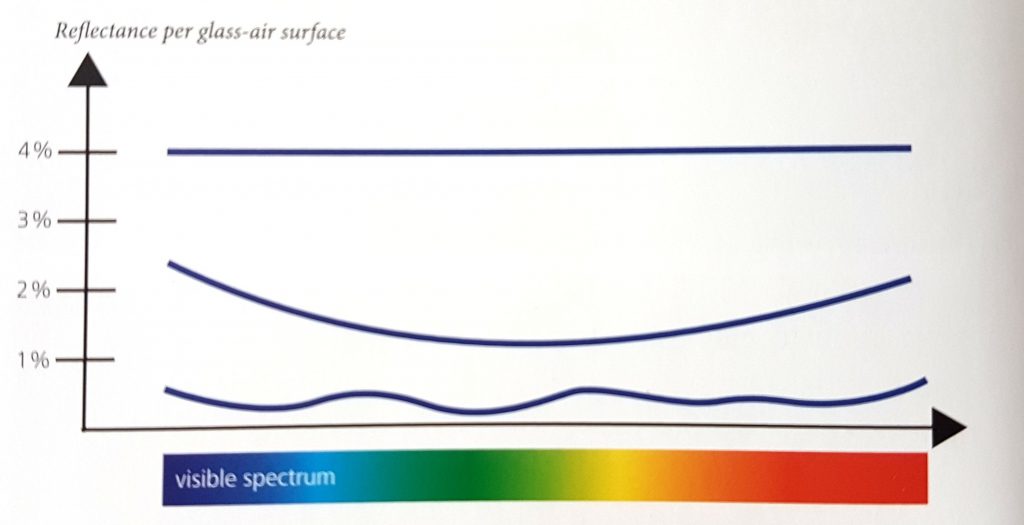
Source: ZEISS
Light transmission can be increased by applying different coatings on the glass surfaces. However, it depends on the coating type and number of layers. Multi-layered coatings mean higher light transmission.
6.15 Diopter range
The diopter ring is present in the central focusing system on each of the barrels near the eyepiece, where you can correct the difference in the prescription of the left and right eye individually. Once you have set the right value, you can focus the image with using just the central focusing ring. If you’re wearing glasses, the diopter value should be set to 0, because the differences in your eyes are already corrected in your glasses.

To see a sharp image without wearing glasses you can easily set the diopter by looking with the bare eye, turning the ring and adjusting sharpness. So when looking with both eyes your image should appear sharp. If you have astigmatism the diopter adjustment cannot correct it – you’ll still need your glasses and diopter set to 0 to see sharp images.


